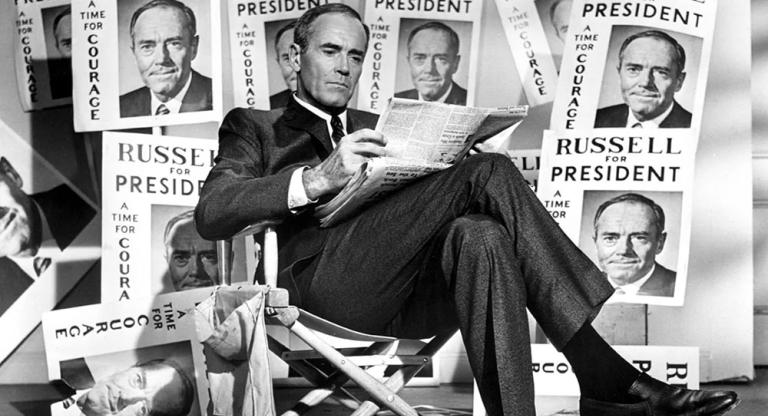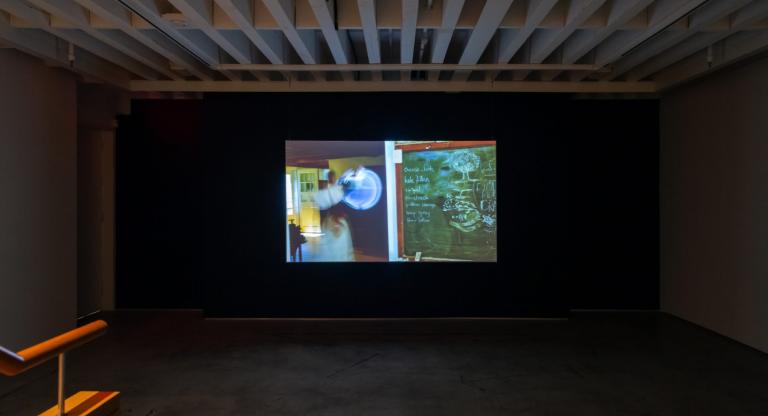It’s a miracle that a bright and audacious queer film movement did not only emerge, but bloomed under the grim military dictatorship that ruled Brazil throughout the 1980s. In the northeastern state of Paraíba, a group of young, fearless filmmakers took lessons and cameras from the Direct Cinema program—a documentary film workshop created by the French filmmaker and father of Cinéma Vérité Jean Rouch—and used them for their own urgent purposes, twisting the documentary form into a semi-narrative art that wagged its tongue at the censorship of the time.
The five short films from this era presented in “The Wave of Queer Cinema in Super-8 from Paraiba” are not just thematically subversive, but stylistically so. Their playful yet pointed use of incongruous costuming shows that queerness isn’t a modern invention and oppression isn’t a fresh wound. Their lack of dialogue in telling nuanced stories about queerness parallels the repression of queer expression in Brazil. And, their sly blend of documentary and fiction points to a willingness to rewrite history. The films’ mischievousness did more than resist the ideology of the dictatorship, it reclaimed what queer life could mean under an oppressive regime.
Grupo Nós Também’s Baltazar Da Lomba (1982) reenacts the story of Baltazar da Lomba in Pernambuco of the late 16th century—the first man tried and convicted for sodomy, in 1595. In the film, Lomba is seen having sex with other men by two locals who snitch on him to the Catholic authorities. But the film does not end with his conviction, rather a scene of the filmmakers, and the handsome actor who plays Lomba, milling about with their cameras.
This scene is followed by a raucous party at Carnival and an epilogue courtesy of the medieval Brazilian troubadour Pero Gonçalves de Portocarreiro, who sings: “Fornicate! Fornicate to your heart's content. For the earth belongeth to the king and nobody hath been to hell for fornicating.” The message in the retelling of this historical fable suggests: witnesses be damned. The widening out of the lens to include the filmmakers near the end highlights the similarities between Lomba’s trial and the censorship the filmmakers were living through. They, like Lomba, are watched, and likely reported on, but their decision is to revel in the face of danger.
Lauro Nascimento’s Miserere Nobis (1982) is perhaps the most subversive film in the program. It is a homoerotic reimagining of The Last Supper that feels both blasphemous and profoundly sacred coming from within a deeply Catholic society. The film begins with photographs of Jesus over which the title credits are shown; he is shown asleep in public transport, dressed in robes and wearing a crown of thorns, his head resting on the shoulder of a stranger. Then we watch an actor, also playing Jesus, stoically traverse a city, from the beach to a bar, beckoning other men to follow him. The only dialogue in the film comes from a professor’s lecture on the films of Lauro Nascimento (the film’s director). He says, “Lauro Nascimento’s films, from where I stand, seem to have a suspicious and intriguing dialectic between what’s purity and perversion.” The professor is also recruited.
Nascimento then shows a dining room of sorts, with a tableau of the Last Supper. He stages Jesus in his iconic white robe and red shawl, surrounded by his disciples—men from the city wearing street clothes. The men pick up and pass around pieces of fruit—as euphemistic in Brazil as it is in the United States—while Jesus tears apart a loaf of bread. They tease each other and laugh, throwing bits of food at one another. The film then cuts and Jesus is shown laying on a tiled floor, arms splayed and eyes closed, as his disciples hold him in painterly positions. Once again, these images demonstrate that togetherness is as meaningful, if not more so, than its ultimate punishment and demise.
Pedro Nunes's Closes (1982, pictured at top) is the most straightforward film in the program. It is also the longest and least interesting. The title roughly translates into English as “close-ups,” which is almost exclusively what the film is composed of, primarily nameless man-on-the-street interviews about homosexuality that are accompanied by a voice-over that references letters about indecision, shame, and cowardice between two gay men whose affair has been discovered—scenes of two nude men caressing one another in public are intercut. It’s clear what the film’s intention is, particularly because many of the interviews in the film are with virulent homophobes, including cops.
Nunes shows what it is about Brazilian society that kept these men apart. The interviews repeat themselves, but even the most unique ones aren’t particularly interesting. Although, there are a few interviews with women that add a different dimension to the program—this is the only footage in the entire program that includes the perspective of women. Awkwardly placed in the middle of the film, there is a dreary and protracted performance by a drag queen. But perhaps all of it is worth it to hear one commentator’s quotation of the Brazilian poet Carlos Drummond de Andrade: “Do not seize a dark love with white lace.”
Then there’s Bertrand Lira’s Perequeté (1981), which is the most traditional documentary in the program, but also the most complex film from the selection when it comes to the presentation of identity. The film offers a painfully intimate portrait of the drag queen Francisco Marto—a bitterly talented young dancer whose persona is as necessary to his survival as it is dangerous—that reveals nothing.
Lira interviews Marto, his father, and his aunt—all three of whom disagree regarding the acceptability of men performing in drag, but verbally agree, on camera, that Marto is straight. Marto’s drag name, Perequeté, is revealed as a childhood nickname that stuck—much to his chagrin. At least, until he was older and saw the use in having an alter-ego for his stage-life. Of course, we want to take Marto at his word—it is only fair and right to believe him. If he says he’s straight, sure, he’s straight. It doesn’t change the quality of his impassioned performances in full drag. He vehemently insists that performance and homosexuality aren’t connected, but in this context, one feels the film itself winking back at Marto.
In Your Lipstick Was Red (1983), director Henrique Magalhães plays a reveler at a real party called Virgens das Trincheiras (which translates to “Virgins of the Trenches”) during Carnival. The film shows men in feminine clothes, make-up, and wearing flower garlands in their hair, frolicking and blowing kisses at the camera. Cars honk as they parade down the street. Magalhães's character makes a connection with one of the other men, an actor, only for the latter to become embarrassed and toss him aside in shame. Now, without his costume, Magalhães walks alone into a pool of water, disappearing from view as he becomes completely submerged. But later, a miracle occurs. Back at the party, Magalhães is seen entangled in the arms of his new lover, both of them happy as clams. Your Lipstick Was Red rewrites a thwarted queer love story—the only kind at the time—as it's being told, and gives it an amazingly fortunate happy ending.
The Wave of Queer Cinema in Super-8 from Paraíba screens tonight, August 31, at Anthology Film Archives as part of the series “Best of Narrow Rooms.”



